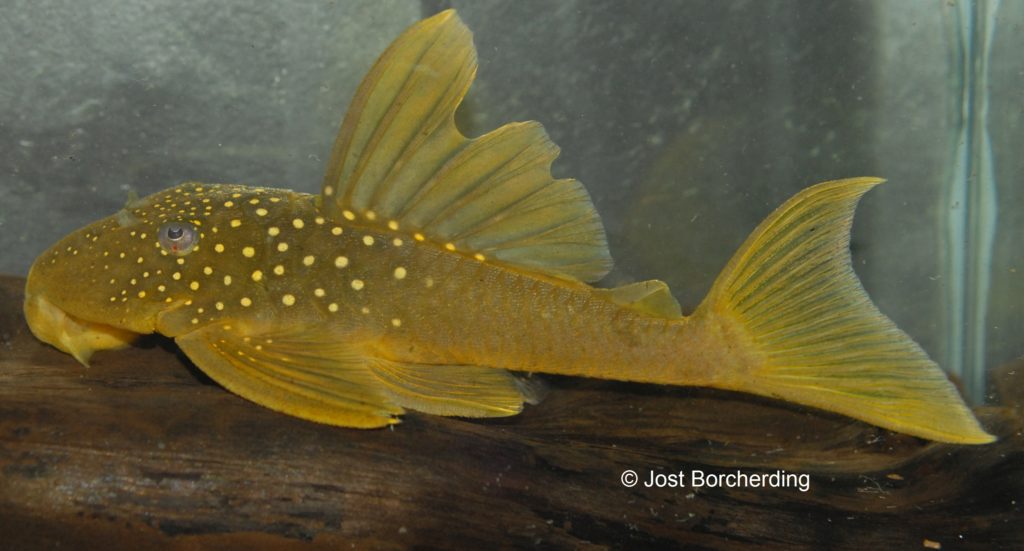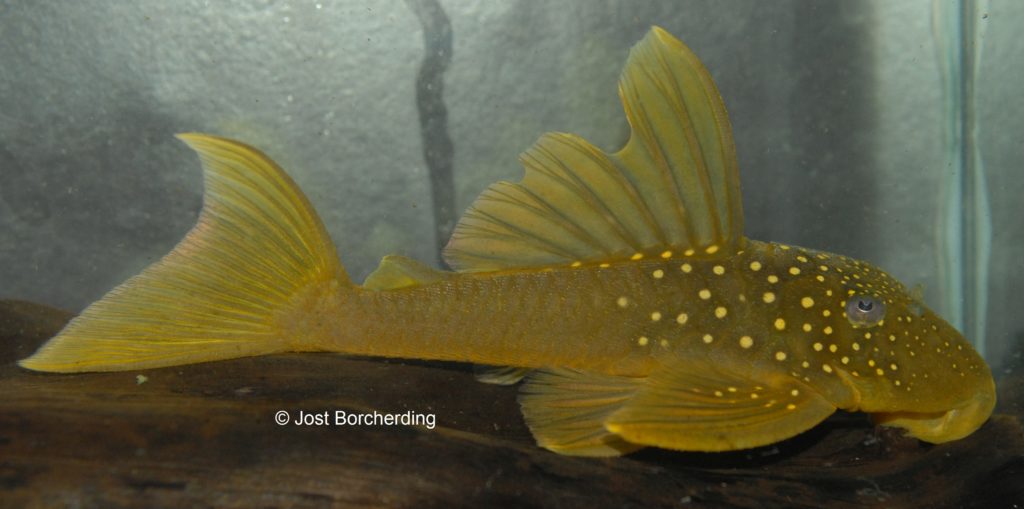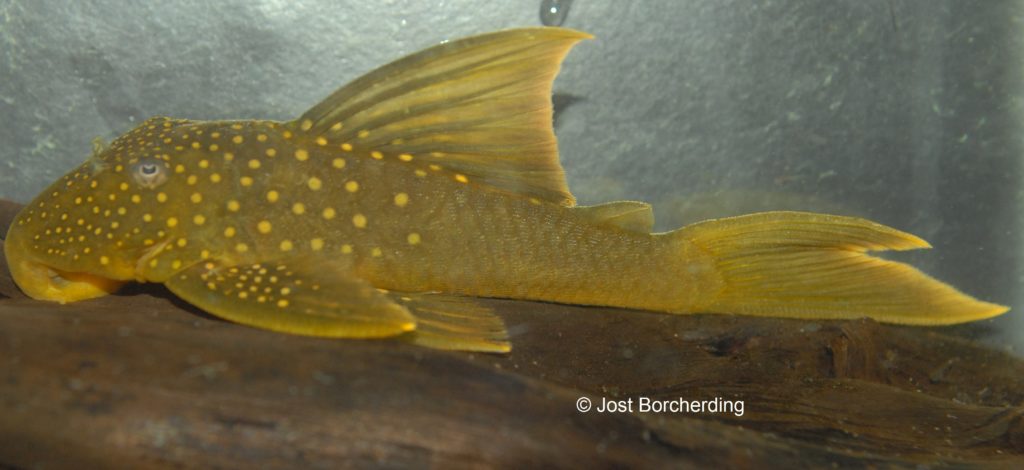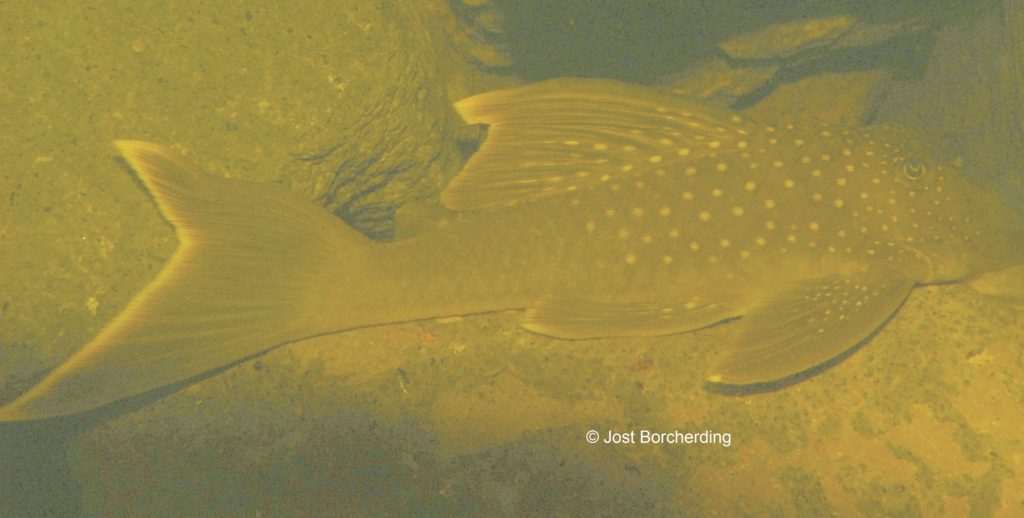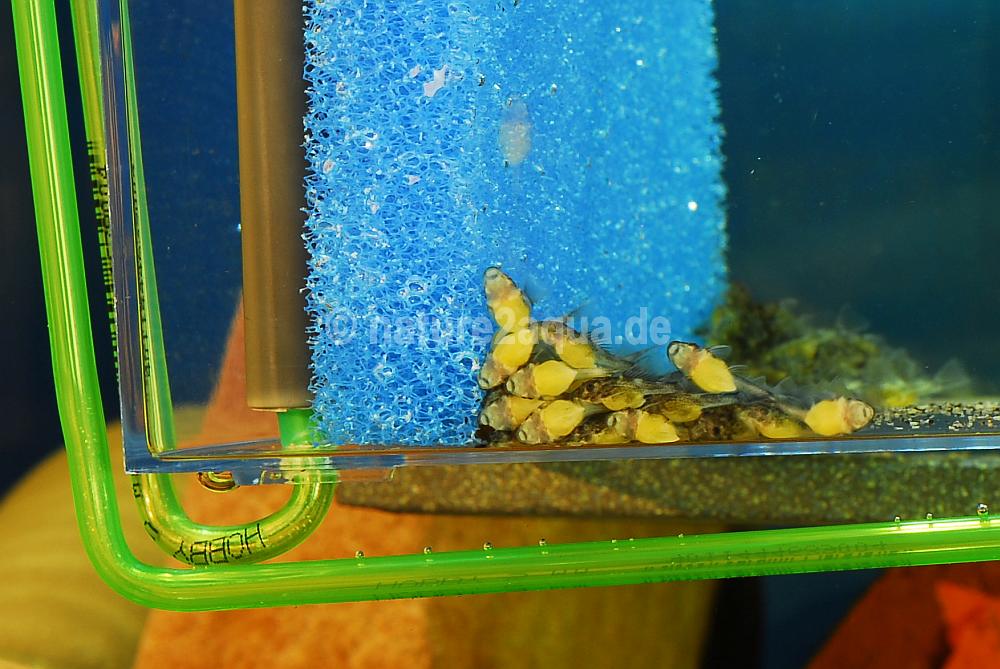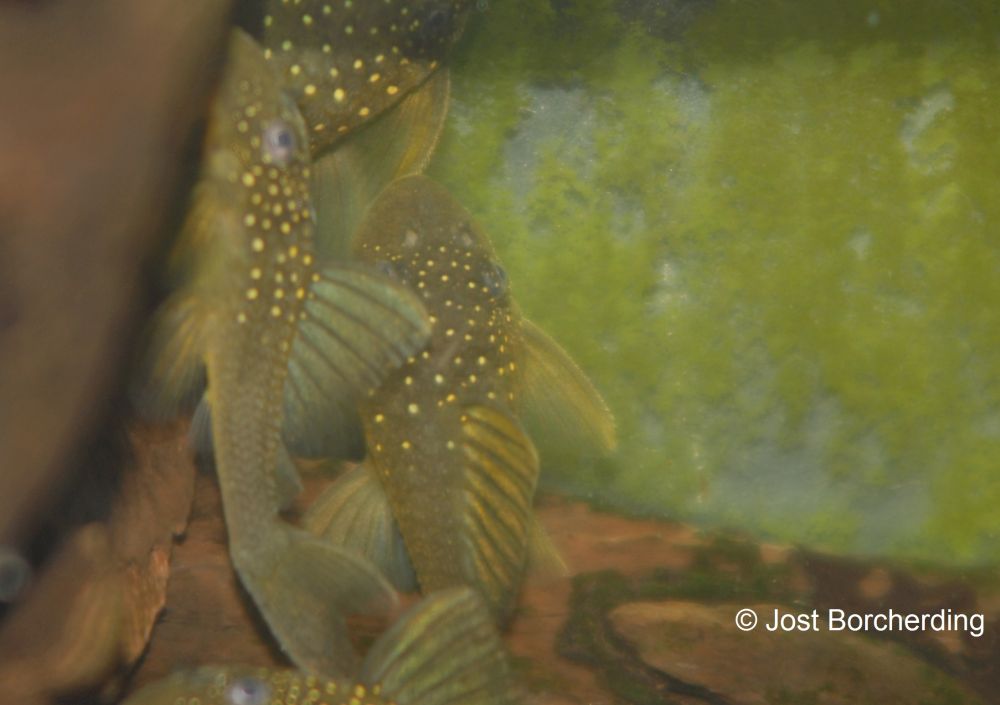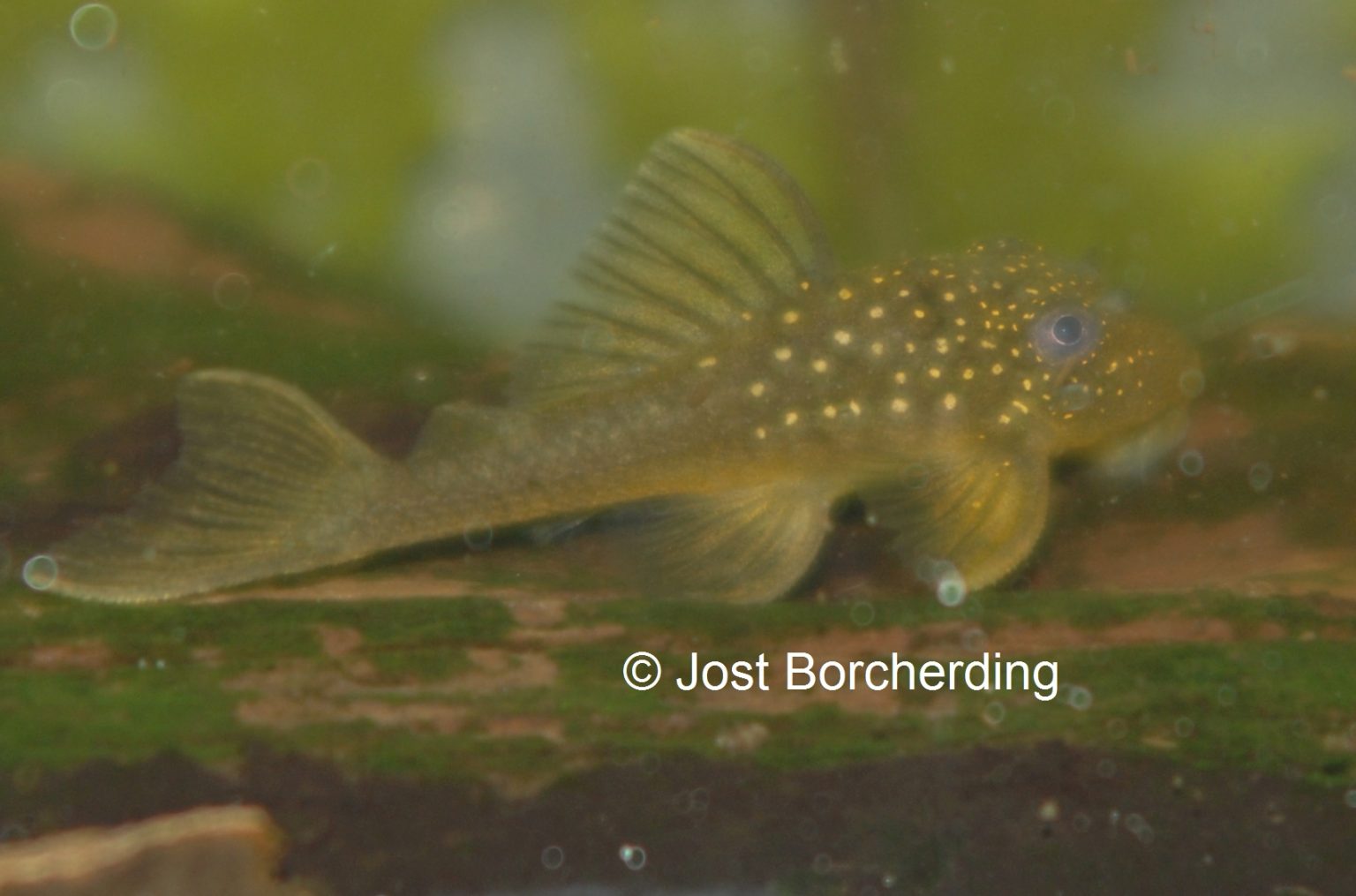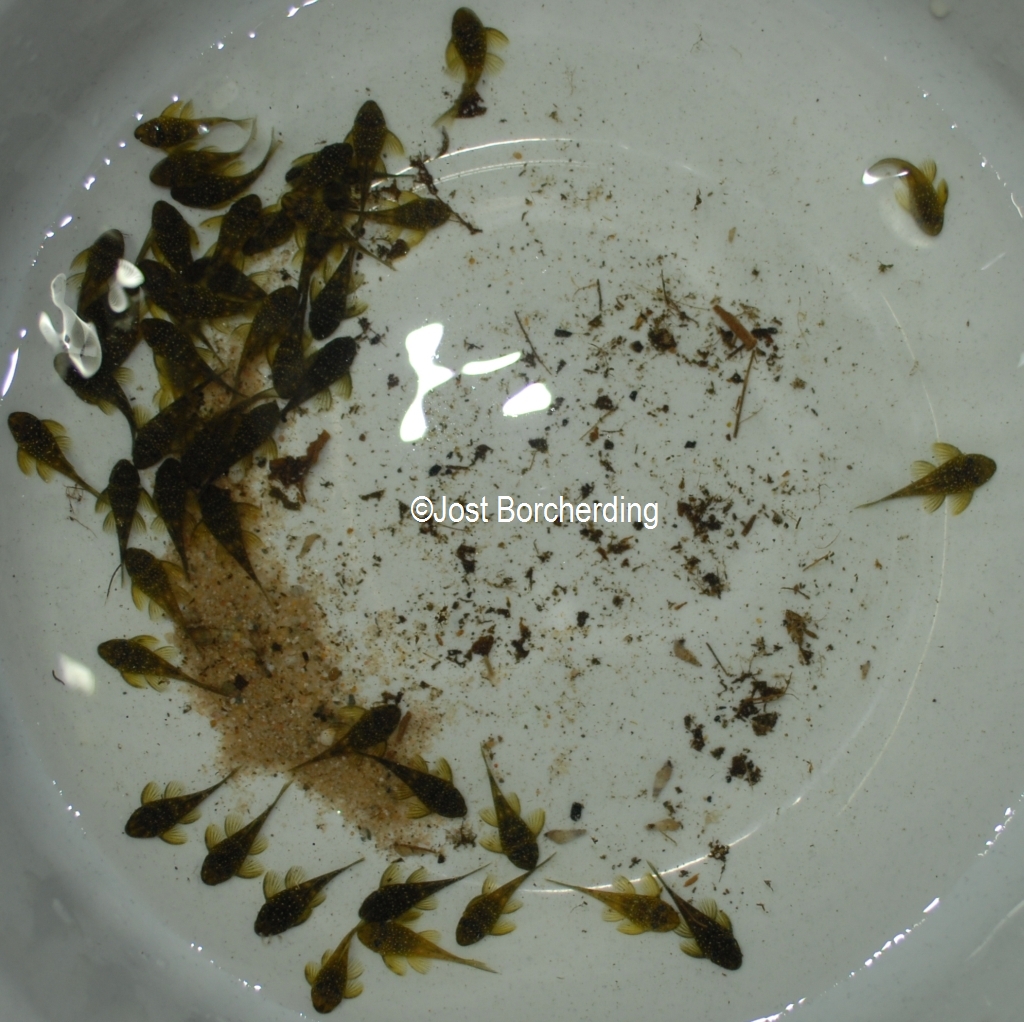Hemiancistrus subviridis L200 LowFin
Hemiancistrus subviridis or L200 LowFin, as it was initially called in the aquarium hobby, occurs syntopically in the Rio Orinoco catchment area together with Baryancistrus demantoides, L200 HiFin. In the current classification, both species are assigned to two different genera, but opinions differ on this.
Hemiancistrus subviridis (L200 LowFin) generally remains somewhat smaller than L200 HiFin (my largest breeding specimens are just over 20 cm in size) and its basic colouration is more of a really nice green, compared to the somewhat browner shade of green of L200 Hifin, which, at least in my case, is also becoming much bulkier at just under 30 cm. The following two pictures show Hemiancistrus subviridis (L200 LowFin, approx. 10 cm).
In addition to colouration and size, there are other distinguishing features. On the one hand, the mouth discs are shaped differently (LowFin rather roundish, HiFin rather angular, see the great photos by Ralf Heidemann on L-Catfish at http://www.l-welse.com/reviewpost/showproduct.php?product=215). Another feature is the membrane between the last ray of the dorsal fin and the back:
A membrane is usually clearly visible in the HiFin, but not in the LowFin. But be careful, sometimes the membrane can also be significantly reduced, as was the case with one of my animals, where the membrane was barely recognisable (see arrow in next picture). Other characteristics are the shape of the dorsal fin (higher in the HiFin and the first ray of the very long, sickle-shaped tip of the dorsal fin) and also its colouring, because if spots are visible on the dorsal fin, they are usually between the fin rays in the HiFin (sometimes also very close to the fin rays), but in the LoFin they are always on the fin rays.
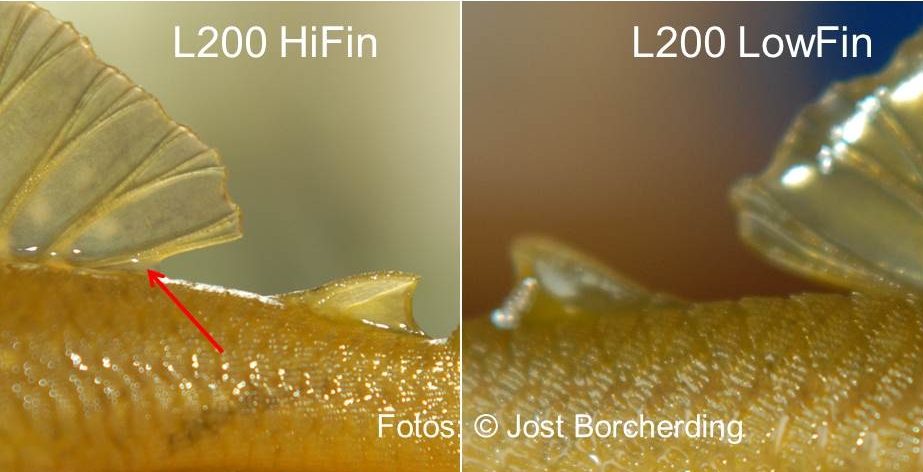 And here is a nice Baryancistrus demantoides L200 HiFin (approx. 11 cm), you can easily recognise the sickle-shaped tip of the dorsal fin and also the slightly lighter fringe on the dorsal and caudal fin, this is not so pronounced in the LowFin.
And here is a nice Baryancistrus demantoides L200 HiFin (approx. 11 cm), you can easily recognise the sickle-shaped tip of the dorsal fin and also the slightly lighter fringe on the dorsal and caudal fin, this is not so pronounced in the LowFin.
One of the L200 HiFins in the large tank, it is about 25 cm tall.
The L200 LowFin has already been bred several times, the reports on the L200 HiFin are unclear.
In my group of L200 LowFin, eggs are actually laid regularly, but they don’t always develop or if they do, only at a low rate (reasons unknown). But it can also work really well and then you have 50 to 100 young larvae in the hanging box (great fun!).
Like most L-catfish, the young then grow up quickly and without any problems.
The reward after around 4-6 months, a bowl full of L200 LowFins

